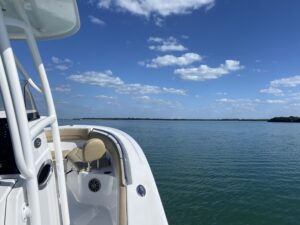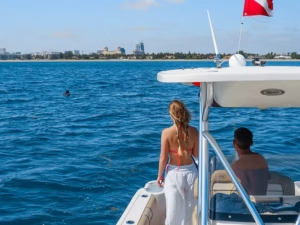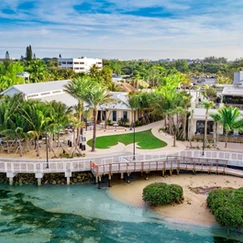Simply being on a boat is fun, but where boats can take us to play is even more exciting and often the whole point of boating! Recreating near beaches and sandbars to enjoy the shoreline, raft up for a few hours, and give the kids a place to run and play in shallow water is a great way to enjoy a sunny day. But while you’re enjoying a swim, sandcastles and picnic on shore, you’ll want to be sure the boat is safely secured. Today we’ll go over a refresher on anchoring at a sandbar safely!
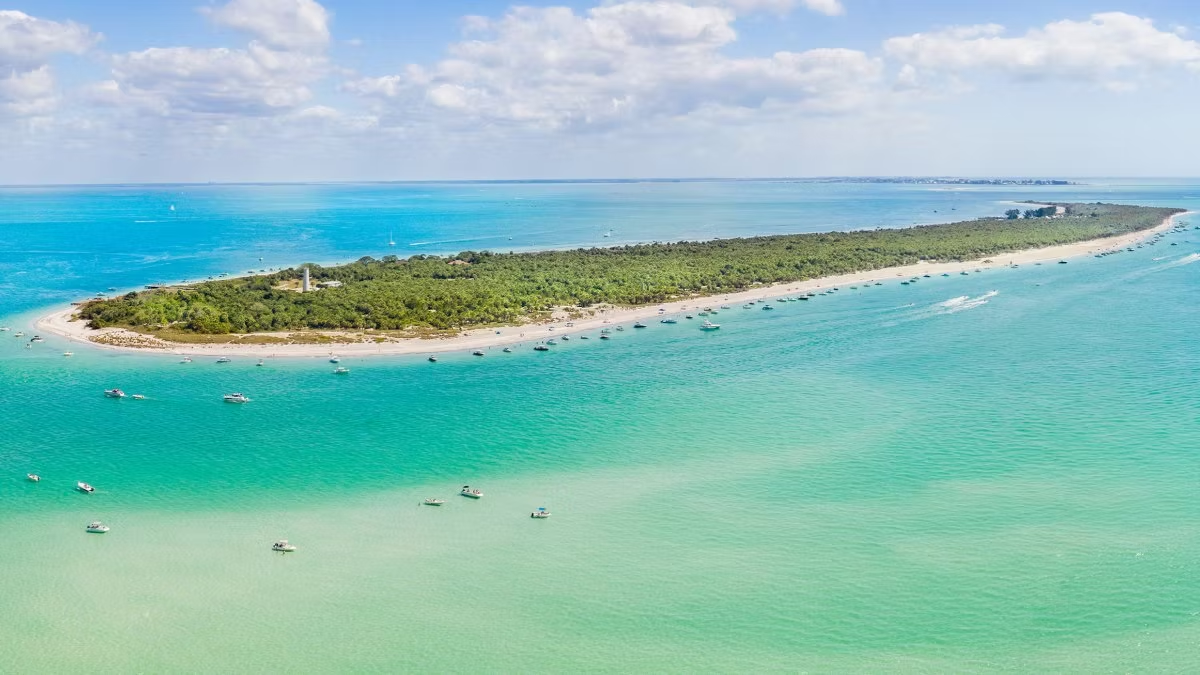
Anchoring at a Sandbar – Step by Step
- Once you’ve chosen your spot, keep the boat engine on and in neutral. Trim your engine(s).
- Lay the anchor on the deck or seat while you coil the line. Keep children and animals away from the line and watch your feet to avoid getting tangled.
- Gently let the anchor down into the water until you see it touch the bottom. Pull on the line to secure it in place.
- Tie the line to the bow cleat with a cleat hitch and adjust as necessary.
Tips to Keep in Mind
How Do You Find Sandbars?
No matter if you’re a local or tourist, word of mouth is the best way to find a sandbar in the area. Ask the fellow boaters around you. A second option is to search the internet for sandbar near me. Keep reading for our list of local hidden gems around Gulfstream Boat Clubs 👀🏝
Just because you find one doesn’t mean you can cruise off to it without understanding the local waters. When anchoring at a sandbar, keep in mind they are masses of sand in areas that you may not expect them to be. As a result, the areas surrounding the sandy island can be shallow. Study a chart or ask for guidance on the proper way to approach the sandbar to avoid running aground.
Before you Throw Anchor
- Know what time the tide will swing. The timing of the tides can help you decide the best place to anchor (and for how long). Check out the Tide Alert App from NOAA
- Gauge your depth. A good rule of thumb for sandbar anchoring is a minimum of 2.5 to 3.5 feet of depth (according to your depth finder)
- Calculate the right amount of anchor line you’ll need. We recommend a 5:1 ratio for sandbars, meaning 5 feet of line for every one foot of depth. If you’re anchoring in 4 feet of water, you’ll want 20 feet of line between anchor and cleat.
Retrieving a Fouled Anchor – Idle into the wind or current to back the anchor out.
An important thing to keep in mind when anchoring at a sandbar is that strong wind and currents are the primary forces that will move a boat around once at anchor. This movement can lodge the anchor in a difficult position and requires careful maneuvering to pull it back out.
To retrieve the anchor, position the boat directly over the anchor and cleat the anchor line at the bow. Gently idle your boat directly into the wind or current. This force will pull the anchor in the opposite direction from which you originally set it and might be enough to free the anchor.
Raising the Anchor
Dropping and setting the hook is only half the battle. When it’s time to retrieve the anchor, you simply reverse the process. Start the engine(s), un-cleat the line, take the strain off the rope by powering forward slowly and start retrieving the line/chain.
Use the engine(s) to maneuver the boat – never use the windlass (or your back) to pull the weight of the boat forward. Take care not to ding the hull when the anchor breaks free of the water and swings. If the anchor gets stuck on something on the bottom, cleat the line off and power forward slowly to drive over the anchor and angle it up and out. Stow the rode and anchor neatly so both are ready to go next time.
Know your water colors. Use these helpful reminders to aid you in avoiding water that is too shallow:
- Brown, brown, run aground : These shallows could contain land formations or aquatic grass beds.
- While, white, run aground you might : Sand bars, which appear white, can be shallower than they look. Navigate with caution.
- Green, green, nice and clean : These areas are usually free of shallows, but consult current marine charts to be sure.
- Blue, blue, cruise on through : These deep-water areas are free of reefs or grass beds, but remember that reefs and rocks can rise abruptly, so pay attention.
- While these sayings are helpful, in some areas the color of the water may not be very indicative of what’s down below so always check a marine chart as well.
Members Favorite Sandbars
Our Members have a host of sandbars in Florida to choose from as they explore their home Club! Here are some of our favorite locations!
Top Sandbars in Florida: The Palm Beaches
The Best Florida Sandbars on the Gulf Coast
Anchors Aweigh with Gulfstream Boat Club
Anchoring at a sandbar is a must-learn for safely securing your boat and making sure it stays in place through the ebb and flow of tides. The shallow sandy-bottom waters make it easy to see where you’re dropping and what’s happening underneath. Dropping anchor is a great basic skill that every boater should be familiar with—even if you don’t anticipate doing it very often.
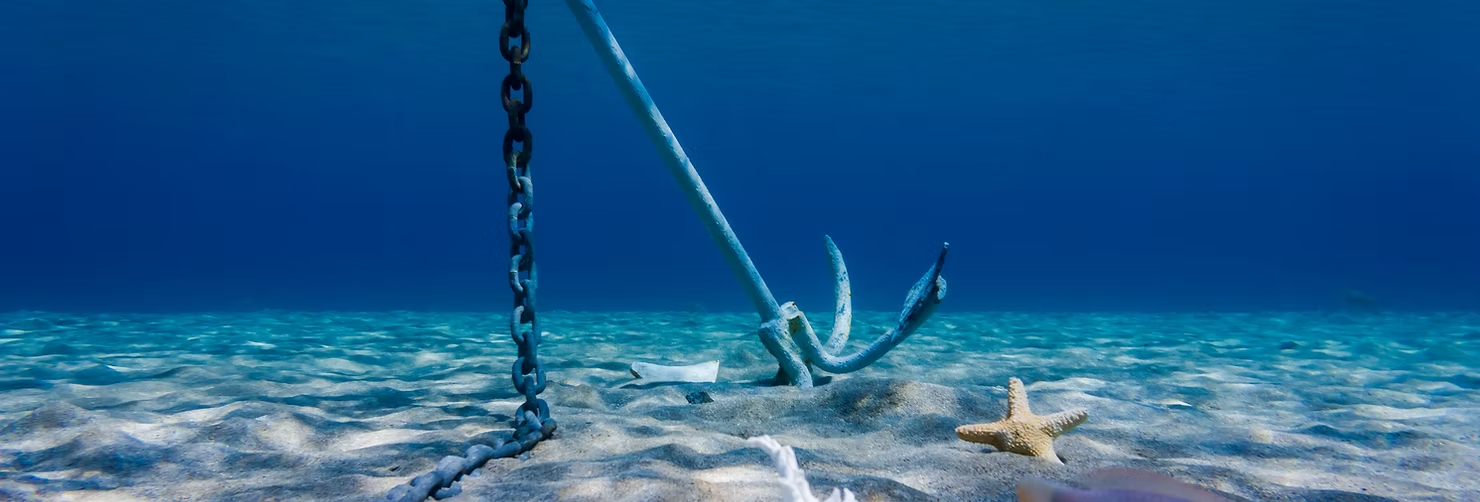
Are you a visual learner? Head to our Instagram to watch the Gulfstream Boat Club crew teach you how to anchor at a sandbar. Scroll to find more lessons like how to dock a boat and tie a cleat hitch. Do you want more training? Reach out to our Member Services team for on-the-water training. We’ll show you all the best places to practice anchoring so you can show up to your favorite sandbar feeling and looking like a pro.
#SandbarAnchoring #stuckanchor #TossandAnchor #FloridaTides #HowTo #findsandbars #Anchoring #membertips #SandbarSnorkeling #tampasandbars #howtoanchor #sandbardays #palmbeachsandbars #tossanchor #Sandbar #StPeteSandbars
